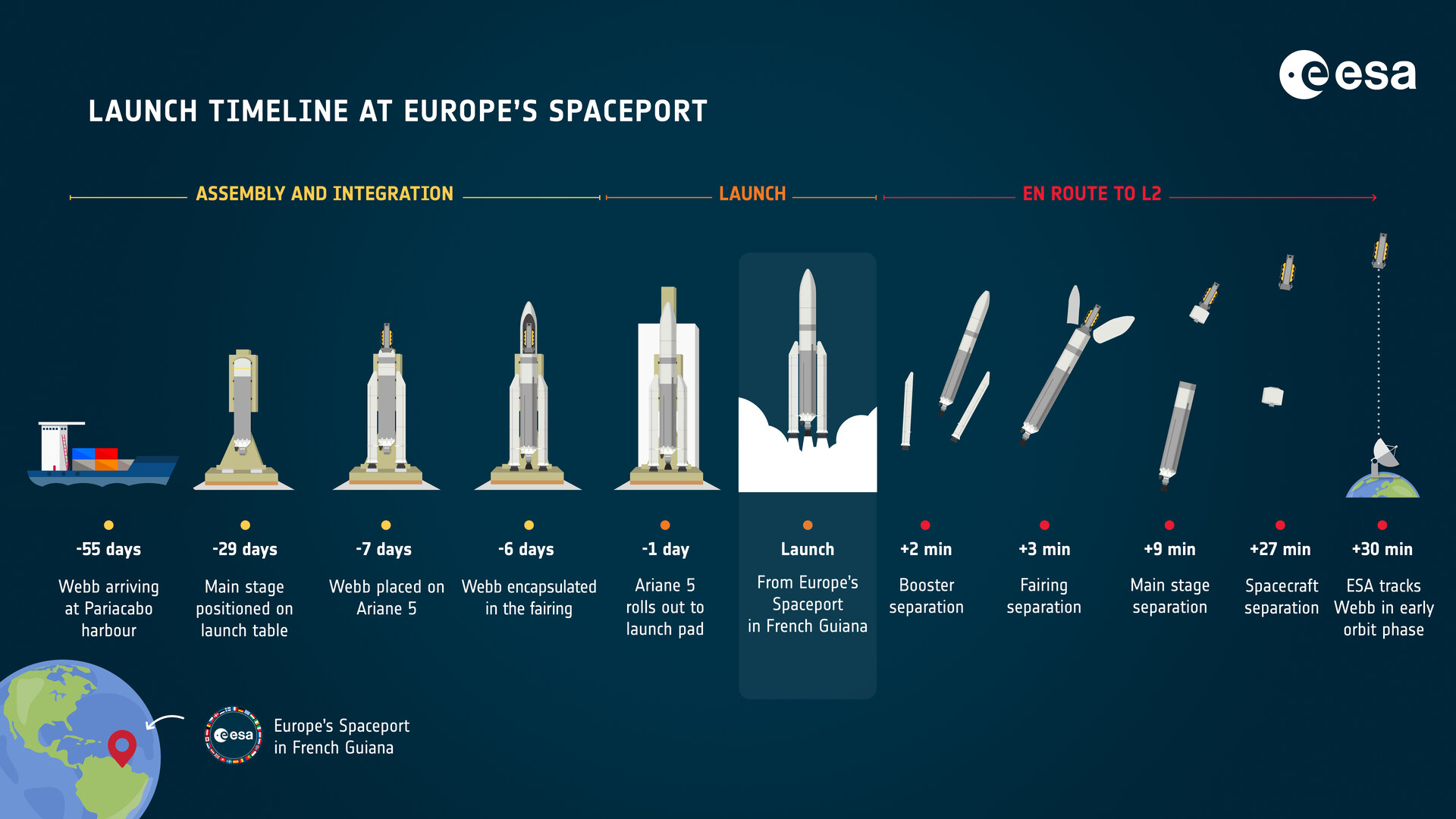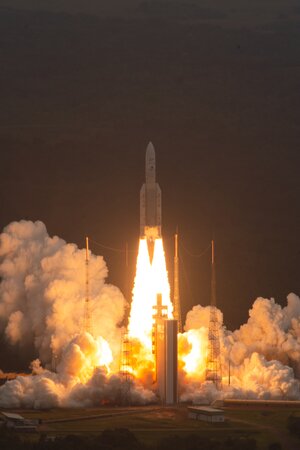Accept all cookies Accept only essential cookies See our Cookie Notice

About ESA
The European Space Agency (ESA) is Europe’s gateway to space. Its mission is to shape the development of Europe’s space capability and ensure that investment in space continues to deliver benefits to the citizens of Europe and the world.
Highlights
ESA - United space in Europe
This is ESA ESA facts Member States & Cooperating States Funding Director General Top management For Member State Delegations European vision European Space Policy ESA & EU Space Councils Responsibility & Sustainability Annual Report Calendar of meetings Corporate newsEstablishments & sites
ESA Headquarters ESA ESTEC ESA ESOC ESA ESRIN ESA EAC ESA ESAC Europe's Spaceport ESA ESEC ESA ECSAT Brussels Office Washington OfficeWorking with ESA
Business with ESA ESA Commercialisation Gateway Law at ESA Careers Cyber resilience at ESA IT at ESA Newsroom Partnerships Merchandising Licence Education Open Space Innovation Platform Integrity and Reporting Administrative Tribunal Health and SafetyMore about ESA
History ESA Historical Archives Exhibitions Publications Art & Culture ESA Merchandise Kids Diversity ESA Brand Centre ESA ChampionsLatest
Space in Member States
Find out more about space activities in our 23 Member States, and understand how ESA works together with their national agencies, institutions and organisations.
Science & Exploration
Exploring our Solar System and unlocking the secrets of the Universe
Go to topicAstronauts
Missions
Juice Euclid Webb Solar Orbiter BepiColombo Gaia ExoMars Cheops Exoplanet missions More missionsActivities
International Space Station Orion service module Gateway Concordia Caves & Pangaea BenefitsLatest
Space Safety
Protecting life and infrastructure on Earth and in orbit
Go to topicAsteroids
Asteroids and Planetary Defence Asteroid danger explained Flyeye telescope: asteroid detection Hera mission: asteroid deflection Near-Earth Object Coordination CentreSpace junk
About space debris Space debris by the numbers Space Environment Report In space refuelling, refurbishing and removingSafety from space
Clean Space ecodesign Zero Debris Technologies Space for Earth Supporting Sustainable DevelopmentApplications
Using space to benefit citizens and meet future challenges on Earth
Go to topicObserving the Earth
Observing the Earth Future EO Copernicus Meteorology Space for our climate Satellite missionsCommercialisation
ESA Commercialisation Gateway Open Space Innovation Platform Business Incubation ESA Space SolutionsEnabling & Support
Making space accessible and developing the technologies for the future
Go to topicBuilding missions
Space Engineering and Technology Test centre Laboratories Concurrent Design Facility Preparing for the future Shaping the Future Discovery and Preparation Advanced Concepts TeamSpace transportation
Space Transportation Ariane Vega Space Rider Future space transportation Boost! Europe's Spaceport Launches from Europe's Spaceport from 2012Latest

Webb launch timeline at Europe’s Spaceport
Thank you for liking
You have already liked this page, you can only like it once!
The James Webb Space Telescope (Webb) will be the largest, most powerful telescope ever launched into space.
Webb’s flight into orbit will take place on an Ariane 5 rocket from Europe’s Spaceport in French Guiana. As part of the international collaboration agreement, ESA is providing the observatory’s launch service.
The Webb launch campaign of almost 70 days involves a team of more than 100 experts hosted at Europe’s Spaceport. NASA is highly involved, working closely with ESA towards launch.
Webb is large. Though the observatory weighs only six tonnes, it is more than 10.5 m high and almost 4.5 m wide in the folded position. Its shipping container is 30 m long, and with equipment included weighs more than 70 tonnes. Because of this, Webb will come to French Guiana by sea, crossing the Panama Canal to dock in Pariacabo harbour in Kourou. From here, it will be transported by a dedicated truck to Europe’s Spaceport. Ground equipment will arrive by sea and air from around the United States.
The cleanliness requirements are so high that a tent 12.5 m high and 12 m wide will be placed over Webb inside the cleanroom itself, purged at all times with extremely pure air to remove any contamination. Whenever this tent is removed, walls of filters will take over and fans will be switched on. In addition, the fairing and other rocket parts close to Webb will be treated specially to ensure cleanliness.
From liftoff until separation, CNES Launch Range services will track Ariane 5 from ground stations in Kourou, in Ascension Island (South Atlantic), Natal (Brazil), Libreville (Gabon) and Malindi (Kenya).
Immediately after Webb separates from the rocket, ESA's tracking station network, ESTRACK, will follow the Early Orbit Phase operations using its Malindi ground station in collaboration with NASA’s station network.
Webb is an international partnership between NASA, the European Space Agency (ESA) and the Canadian Space Agency (CSA).
-
CREDIT
ESA -
LICENCE
ESA Standard Licence

Webb liftoff on Ariane 5

Webb liftoff on Ariane 5

Webb liftoff on Ariane 5

Webb liftoff on Ariane 5















 Germany
Germany
 Austria
Austria
 Belgium
Belgium
 Denmark
Denmark
 Spain
Spain
 Estonia
Estonia
 Finland
Finland
 France
France
 Greece
Greece
 Hungary
Hungary
 Ireland
Ireland
 Italy
Italy
 Luxembourg
Luxembourg
 Norway
Norway
 The Netherlands
The Netherlands
 Poland
Poland
 Portugal
Portugal
 Czechia
Czechia
 Romania
Romania
 United Kingdom
United Kingdom
 Slovenia
Slovenia
 Sweden
Sweden
 Switzerland
Switzerland
























